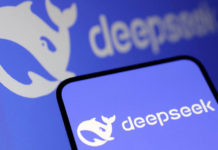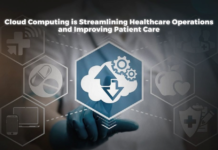The digital world has already completely changed as a result of cloud computing, which allows companies to grow quickly, innovate constantly, and run more effectively. Cloud computing is set to experience even more profound developments as 2025 draws near. These developments will bring in completely new technological paradigms in addition to improving current capabilities. Let’s examine the developments and trends that will influence the direction of cloud computing in 2025.
Multi-Cloud and Hybrid Cloud Dominance
Hybrid cloud systems and multi-cloud computing will be commonplace by 2025. Businesses are using more and more different cloud providers to maximize efficiency, cut expenses, and prevent vendor lock-in. Hybrid cloud solutions will provide unmatched flexibility by fusing public and private clouds with on-premises infrastructure. With this strategy, companies can easily shift workloads between environments, resulting in better resource efficiency and data security.
Edge Computing Expansion
The increasing number of devices and sensors producing massive volumes of data will only accelerate the emergence of edge computing. By processing data closer to the source, edge computing lowers latency and uses less bandwidth. Significant progress in edge infrastructure is anticipated by 2025, allowing real-time data processing for applications like IoT, smart cities, and autonomous vehicles. This change would lessen the constraints of conventional cloud architectures and enable enterprises to provide faster, more responsive services.
AI and Machine Learning Integration
By 2025, cloud platforms will have a strong integration of machine learning and artificial intelligence. More advanced AI and ML services will be available from cloud providers, which will facilitate the deployment and management of intelligent applications by enterprises. These technologies will improve decision-making procedures, promote automation, and offer predictive analytics. Advanced cybersecurity protections and personalized consumer experiences are only two examples of how AI and ML will be essential to opening up new cloud options.
Enhanced Security and Compliance
Cloud computing security measures will change in tandem with the evolution of cyber threats. Cloud service providers will put in place more sophisticated security frameworks by 2025, including threat detection and response systems powered by AI. Furthermore, cloud platforms will provide integrated compliance solutions to assist firms in navigating complicated legal landscapes, streamlining regulatory compliance. These developments will protect data integrity and privacy while enhancing confidence in cloud solutions.
Quantum Computing Integration
Even though it’s still in its early stages, quantum computing should advance significantly by 2025. Cloud service providers will start incorporating quantum computing features, which would give unmatched processing power for particular applications. This discovery will transform a number of domains, including material science, cryptography, and complicated optimization issues. By using quantum cloud services early on, businesses may solve issues that were thought to be beyond the scope of traditional computing, giving them a competitive advantage.

Serverless Computing Maturity
By 2025, serverless computing—which enables programmers to create and operate apps without having to worry about managing servers—will go to new heights. With this paradigm, the emphasis is shifted from managing infrastructure to executing code, resulting in quicker development cycles and lower operational overhead. More apps and use cases will be supported by serverless architectures as they grow stronger. This development will make scalable computer resources more accesible to all, promoting innovation in a variety of sectors.
Sustainability and Green Cloud Initiatives
One of the main forces behind the development of cloud computing will be sustainability. Green cloud projects and energy-efficient data centers will be given priority by cloud providers by 2025. Leading the way will be advancements in cooling technology, integrating renewable energy, and lowering carbon emissions. Companies will pick cloud partners more and more on the basis of their sustainability pledges, coordinating their operations with eco-friendly methods.
Conclusion
In 2025, cloud computing has a bright future ahead of it. Unmatched flexibility will be provided by multi-cloud and hybrid settings, while edge computing will move processing power closer to data sources. Further capabilities will be made possible by AI and quantum computing, and improved security features will increase confidence in cloud systems. will become more efficient thanks to serverless computing, and sustainability will gain importance. The cloud will remain a key component of digital transformation, innovation, and corporate expansion as these themes come together. In order to prosper in the dynamic digital environment, firms must embrace these innovations.






